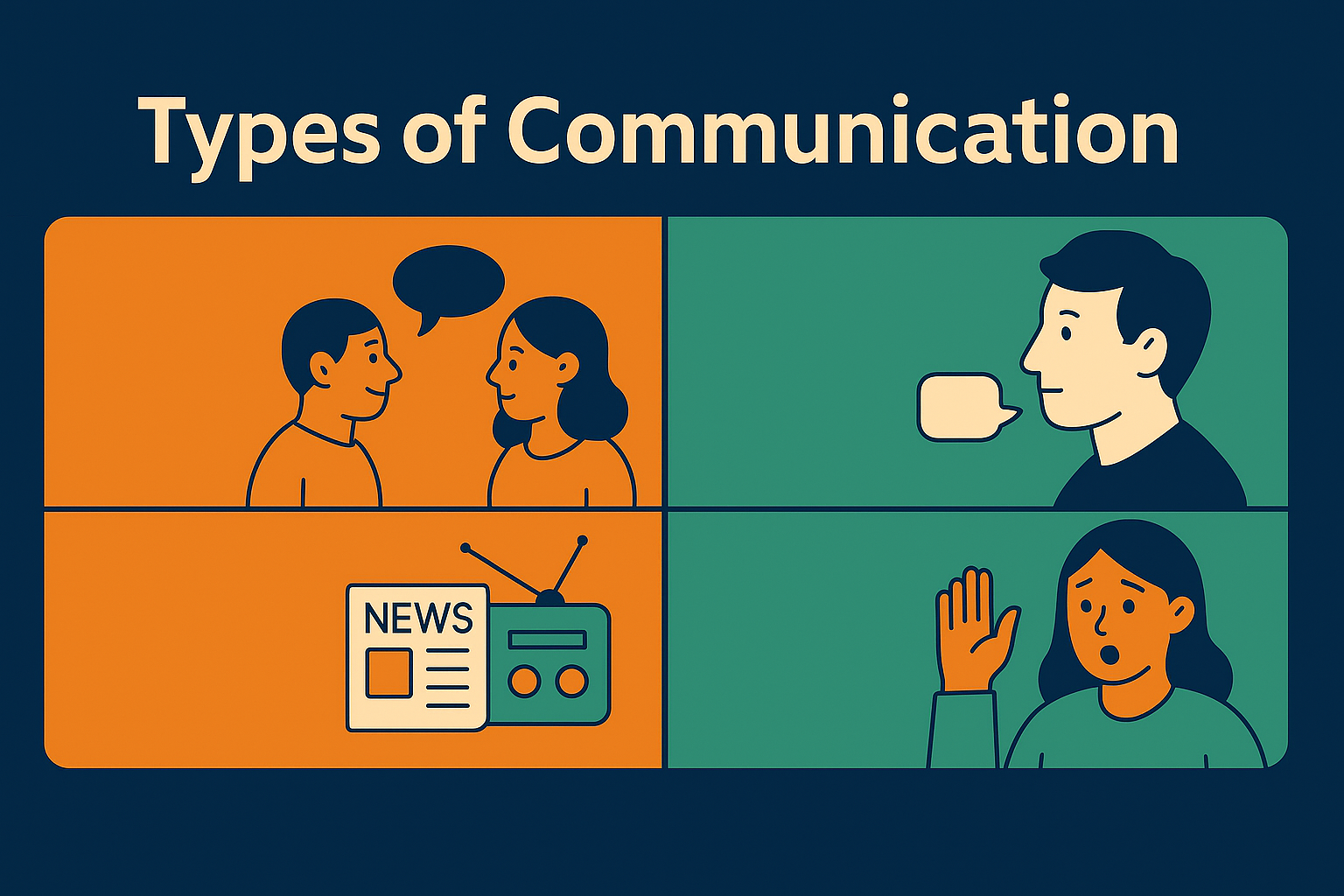Hey, fellow learners! 👋
Let’s decode something we all do every single day — communication!
From chatting with friends to thinking silently in our heads, every act of exchanging a message falls into a type of communication.
Here’s your simplified guide:
| Type of Communication | What It Means | Examples |
|---|---|---|
| Interpersonal | When two or more people talk to share feelings, exchange ideas, or understand each other better. | One-on-one chats, arguments, group discussions, family talks. |
| Intrapersonal | When you talk to yourself — in your thoughts, feelings, or even while journaling. | Daydreaming, thinking, self-reflection, reading. |
| Mass Communication | When professionals use media to send messages to a large, diverse audience — fast and widely. | News on TV, radio shows, newspapers, YouTube videos. |
| Non-verbal Communication | Saying something without words — using actions, appearance, or symbols. | Gestures, dressing style, flags, parades, eye contact. |
Contents
👥 Is Interpersonal the same as Group Communication?
Nope — they’re cousins, not twins!
- Interpersonal involves one-on-one or small intimate exchanges — like a heart-to-heart talk.
- Group communication happens in a larger setting — like a classroom discussion, team meeting, or public speaking.
Let’s Talk Intrapersonal Communication
Ever had a deep talk… with yourself? That’s intrapersonal communication — and it’s more powerful than it sounds.
✨ Key Features:
- Internal Talk – The voice in your head while you’re thinking.
- Self-Reflection – Reviewing your actions, emotions, and values.
- Problem-Solving – Weighing options and imagining outcomes.
- Emotional Check-In – Sorting out your feelings before reacting.
- Personal Growth – Helps you understand and improve yourself.
- Totally Private – No one else knows it’s happening but you.
- Always On – It happens daily, automatically.
- Shaped by Outside World – Conversations and experiences feed your thoughts.
💡 In short: The more mindful your inner talk is, the better you grow.
Group Communication (Subcategory)
- Falls under interpersonal when the group is small enough for every member to actively participate and respond (like a team discussion).
- When the group becomes large and starts resembling a mass audience (like a seminar or public speaking event), it moves away from interpersonal and becomes more public or mass communication.
🚫 Barriers to Effective Communication
Even if you speak clearly, sometimes your message just doesn’t land. Why? Let’s look at the common blocks:
| Barrier | What Happens |
|---|---|
| Perception Gap | The listener only hears what they want to hear. |
| Wrong Signal Use | The message isn’t framed in a way they understand. |
| Noise/Distortion | External or internal distractions break the message. |
| Message Complexity | Overcomplicated words or unclear symbols confuse the receiver. |
Pro Tip:
💬 Keep it simple, relatable, and relevant to your audience’s needs! But even with the best intentions, communication can sometimes fail. Want to know why that happens? 👉 Check out our detailed guide on Barriers to Communication where we explain the types of barriers, real-life examples, and how to overcome them — perfect for students and professionals alike!
🔍 Summary
🎯 Effective communication is not just about speaking — it’s about connecting.
👉Note: You need the right message, in the right format, through the right channel, to the right person, at the right time.
📚 Want to master the art of communication from every angle?
Whether it’s understanding types, decoding barriers, or improving your daily interactions — we’ve got you covered!
👉 Explore all our communication guides and articles here and become a communication pro, one post at a time.



